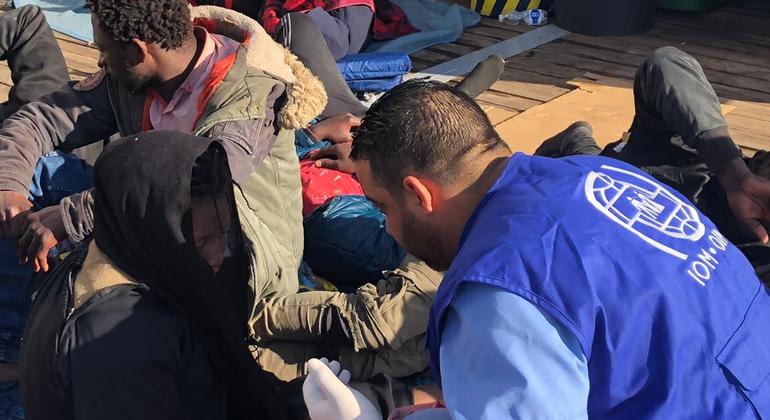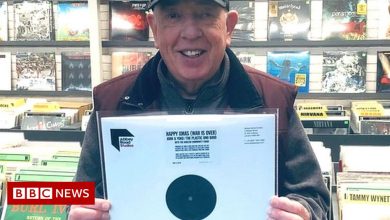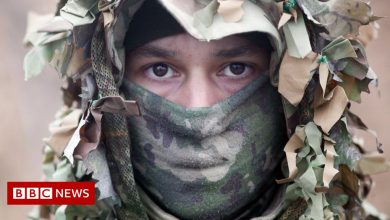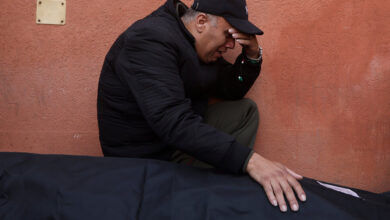Refugees, migrants face violence, abuse and death on routes through Africa, new data shows


Data from a new one report by the Office of the United Nations High Commissioner for Refugees (United Nations High Commissioner for Refugees), International Organization for Migration ((International Organization for Migration) and the Mixed Migration Centre (MMC) highlight the often underreported dangers faced by vulnerable people travelling on dangerous road routes.
Abuse along the route
“Regardless of their situation, migrants and refugees appear to face serious human rights violations and abuses along the way… we cannot lose our sense of outrage at this level of violence,” said Vincent Cochetel, UNHCR Special Envoy for the Western and Central Mediterranean.
It is estimated that more people cross the Sahara than the Mediterranean Sea, and the number of refugees and migrants who die in the desert is thought to be twice that of those who die at sea. The report – “On this journey, no one cares if you live or die” – covers three years of data collection and warns of a rise in the number of people attempting the dangerous crossing.
Stressing that the central Mediterranean migration route remains one of the most dangerous in the world, IOM Mediterranean Coordination Office Director Laurence Hart noted that “a very large number of people” still take the risk of embarking on “very dangerous journeys. There are obviously many people who do not choose to travel, but they are pushed by… political conflict, instability.”
Push factors
Push factors on migration pathways include deteriorating situations in origin and destination countries – such as new conflicts in the Sahel and Sudan – the devastating impact of climate change and disasters on new and prolonged emergencies in East and the Horn of Africa, as well as racism and xenophobia against refugees and migrants.
The report notes that there are significant gaps in protection and assistance across the Central Mediterranean route, forcing refugees and migrants to continue their dangerous journeys.
“Just last week we heard that 5,000 people had died on the Atlantic crossing to the Canary Islands in the first five months of this year – a 700 per cent increase on the same period last year,” said Bram Frouws, director of MMC.
“We also know that although there are no completely accurate figures, and it is actually an underestimate, that countless more people died on the land routes, up to the Mediterranean coast, possibly even more at sea.”
Insufficient efforts
Despite international commitments to save lives and address vulnerabilities, the report’s authors warn that current efforts to hold accountable those responsible for the abuses and dangers faced by migrants and refugees are not enough.
Criminal groups and traffickers are often responsible for horrific abuses, but “state officials, like the police, the military and border guards” also play a role, Frouws said. “But whoever they are, whatever their category, they are responsible. But right now, much of this is happening in a situation of almost complete impunity.”
The report notes that smuggling routes are shifting to more remote areas to avoid areas of ongoing conflict or border controls by state and non-state actors, exposing migrants to greater risks.
Reported abuses include torture, physical violence, arbitrary detention, death, kidnapping for ransom, sexual violence and exploitation, slavery, human trafficking, forced labor, organ removal, robbery, arbitrary detention, mass evictions, and return deportations.
Enhanced lifesaving protection
The report found that support and access to justice for survivors of various forms of abuse were scarce anywhere along the routes, citing inadequate funding and limited humanitarian access. This was particularly true in key locations such as informal detention centres and detention facilities.
Despite these challenges, UNHCR, IOM and partners including NGOs and some governments have stepped up life-saving protection and assistance services, identification and referral mechanisms along the routes. But they stress that humanitarian action is not enough.
“It is important to look at how to regularise or regularise migrants in transit countries if the need arises, but also to look further afield… in European countries that meet the need for talent and manpower,” said IOM’s Hart.
“Opening the usual channels is not really the ultimate solution, but it is certainly a supporting element. Another element, another pillar, that migration governance relies on.”




